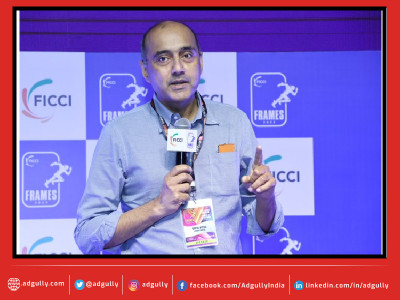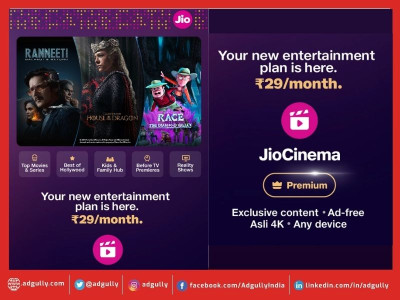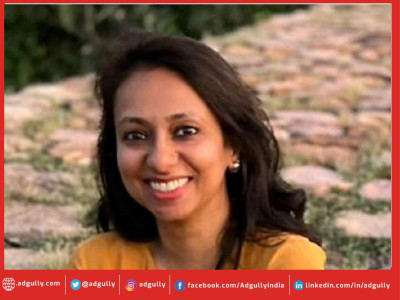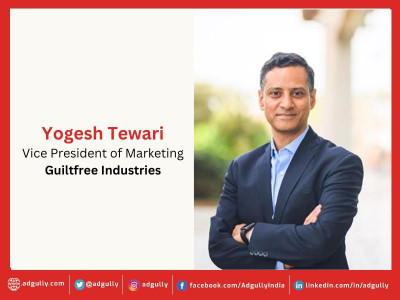5G is going to change and upend pretty much everything: Airtel CEO Gopal Vittal
“In my view, 5G is going to change and upend pretty much everything,” remarked Gopal Vittal, Chief Executive Officer, Bharti Airtel, while delivering his keynote address on ‘Impact of 5G on Media & Entertainment Sector’. He was speaking on Day 1 of FICCI Frames 2023, which got underway in Mumbai on May 3, 2023.
Revisiting the Covid period, Vittal said, “March 25 2020 changed everything. This was the date when the nation went into a lockdown. Everything came to a standstill, what kept the country going were the telecom networks.”
He added, “We were working from home, studying from home, shopping from home, paying from home, and being entertained from home. That was the power of 4G networks. And if you think about it today, in the last 6 years, 99% of this country’s 4G networks, Airtel, alone has invested over $46 billion of capital, just making sure these networks are built up. And in fact, on 4G networks, many industries have been built, the ride sharing industry, the food delivery industry, the payments industry, the e-Commerce Industry, etc., this is the digital spine, on which the country has been actually working.”
“5G is just starting, but it is going to change and upend everything,” Vittal affirmed, adding, “Because the way I see 5G – and we’ve talked about it a lot at the global level – is that it is actually a supercomputer connected to the cloud. It is not just wireless technology. It is a supercomputer because of many factors. First, of course, the speed, the second thing which most people don’t understand is that the compute power is actually moving to the edge. The third thing that will change is the lag between the time a packet moves from one place to another, which is measured in technical terms by word latency, diminishes dramatically, and that is very important for the compute at the edge. The fourth thing is that, today on a 4G network you can have about a thousand devices in a given area. This will be almost 100x of that. So, concurrently many more devices can be run, so everything can be connected.”
He noted, “The roll-out of 5G that is happening today, is happening at a blazing pace. Airtel is adding around 40 new cities every single day. As of yesterday (May 2, 2023), we are in 3,500 towns. By March 2024, we’ll be in every single of the 7,000 towns across India and will also be in about 50,000-100,000 villages. So, it’s an incredible pace of rollout.”
At the same time, Vittal also highlighted four challenges. “The first is that the applications that are needed to really leverage and harness the power of 5G, which is the supercomputer, are still not there, which is why the only application is speed. This is the reason most of us who are experiencing 5G speeds of 300-400 Mbps, don’t even know that you're on fire. Because what you are doing is just browsing, like needing some video, you’re downloading a few files, maybe you’re exchanging emails, you can’t make that difference, because four Mbps is more than adequate to actually drive them. Therefore, you need the ecosystem coming together. It can’t be done just by us. So, the telecom industry is moving at a radical pace and I would say for the first time, the rest of the ecosystem is not keeping pace, across the whole ecosystem. Software companies, IT companies and content companies need to keep pace to see how to harness the power of this technology.”
“The second challenge is infrastructure. This supercomputer needs to be connected. Because if it is not connected, and it is just an island sitting in one location, it is useless. The only way it can be connected to the cloud, is if it’s got fibre, and fibre is the medium around which lots of data can be moved. Governments and municipal corporations have complex rules and ask for huge amounts of money for the same. The Government has done a great job to help us in this, but it’s still not good enough and needs to be sorted out.”
“The third challenge is regulation. Regulation that was very forward-looking at one point in time has now become backwards-looking. The TRAI chairperson has done some amazing work that’s happened on the regulation of telecom. Some of the moves concerning the spectrum were game-changing. Regulators have taken the bold move of reducing spectrum prices and liberalised it.”
The last thing is that business models need to keep pace and change, said Vittal said, adding, “Most content industries use a subscription model combined with the advertising model. There are 120 million users in the Pay TV market and the ad cost in Pay TV is Rs 250. The depth in India in terms of customers’ ability to pay is highly variable.”
“It’s a small market at the top, and a very price sensitive market at the bottom. So, if you take this 120 million, 80 million pay around Rs 150 per month, while the 40 million pay around Rs 350 per month. The advantage of the distribution and carriage model that has been created in this space is that you can still have 400 to 500 channels and you are still getting reach. But the direct-to-customer model that the OTT industry works with is actually where the business model will have to change. Either many of these 40 platforms will perish or they’ll come together. They have to break the problem of the distribution and monetisation challenges. We have 330 million users and can help solve the distribution problems,” Vittal noted.
He concluded by saying, “We are in exciting times. This is a technology that is going to change the world. But it needs thinking by businesses, by the ecosystem, and also by regulation.”


















Share
Facebook
YouTube
Tweet
Twitter
LinkedIn